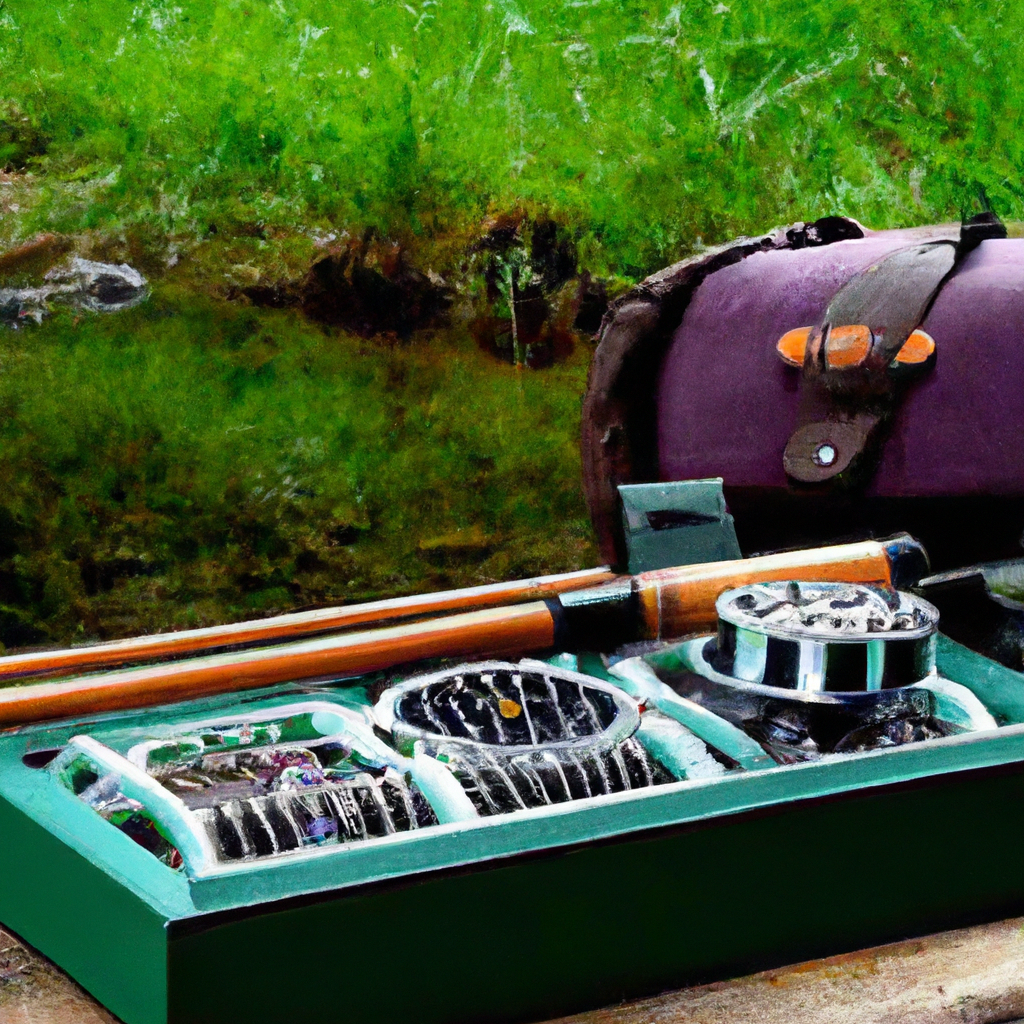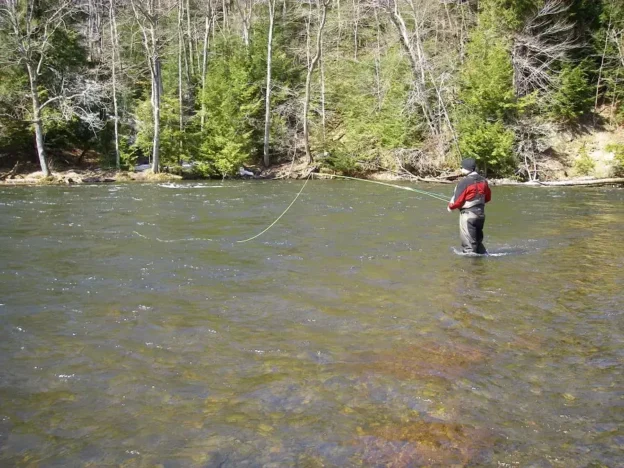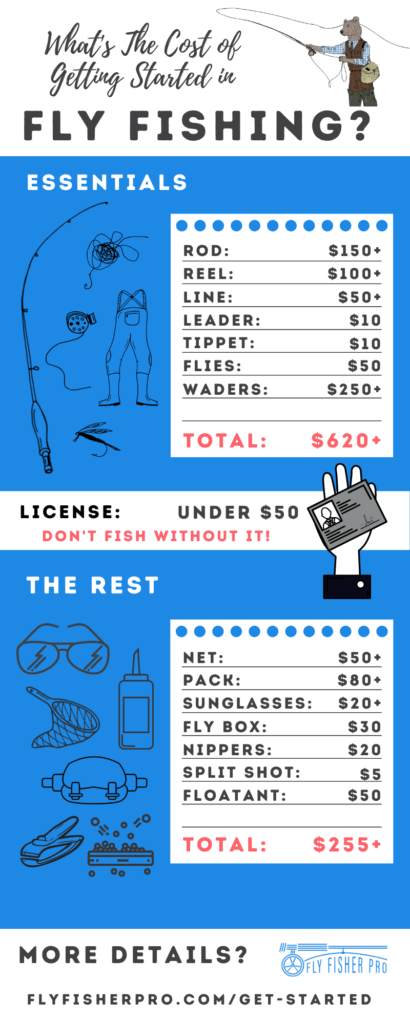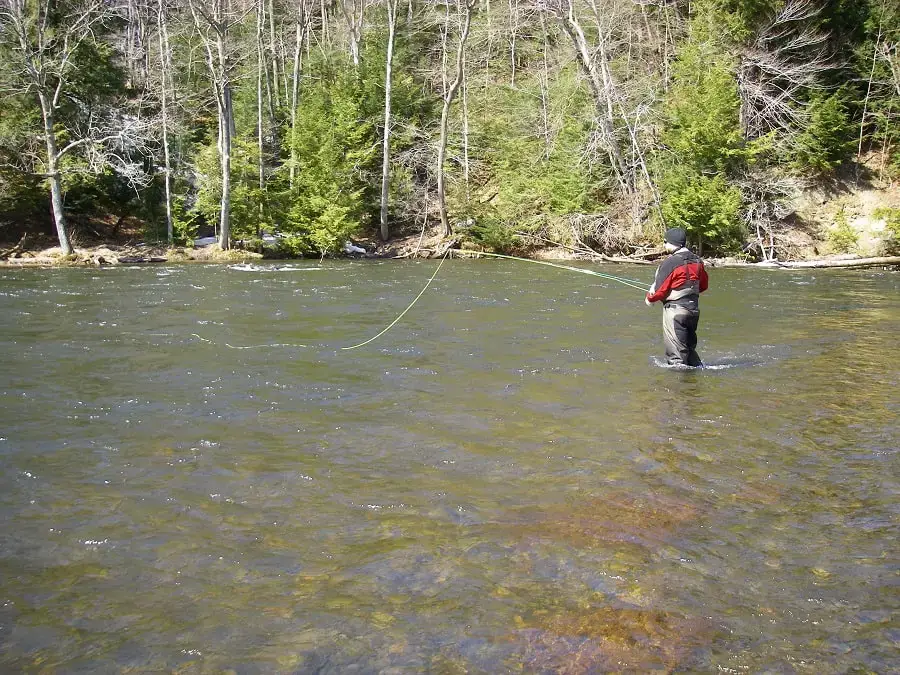So you’re thinking of taking up fly fishing? Well, let’s talk about the essential question on your mind: how much will it actually cost? Fly fishing, known for its graceful casts and tranquil waters, can be a rewarding hobby, but like any pastime, it does come with a few expenses. From rods and reels, to lines and flies, there are various components that make up the cost to start fly fishing. In this article, we’ll break it down for you, giving you a clear picture of what to expect as you embark on this exciting journey into the world of fly fishing.
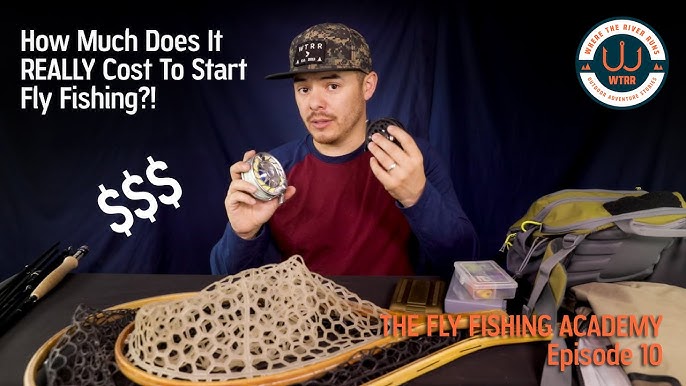
This image is property of i.ytimg.com.
Equipment
Rods
When it comes to fly fishing, choosing the right rod is essential. Fly fishing rods are specifically designed to cast the lightweight flies used in this type of fishing. There are various types of rods available, such as fiberglass, graphite, and bamboo, each with its own unique features and benefits. The cost of fly fishing rods can vary significantly depending on the brand, material, and quality. Entry-level rods typically start around $100, while high-end rods can cost several hundred dollars.
Reels
A fly fishing reel is responsible for holding the line and providing drag when reeling in a fish. Similar to rods, fly fishing reels come in a range of prices based on their quality and features. Entry-level reels can be found for around $50, while higher-end models can cost several hundred dollars. It’s worth investing in a good reel as it plays a critical role in the overall fishing experience.
Lines
Fly lines are specifically designed to cast the lightweight flies used in fly fishing. They come in different weights, which should be selected based on the type of fishing you plan to do. The cost of fly lines can vary depending on their quality, with entry-level options starting at around $30, and higher-end lines costing upwards of $100. It’s important to choose a line that matches your rod and fishing conditions to ensure optimal performance.
Leaders and Tippets
Leaders and tippets are essential components of a fly fishing setup. The leader is the section of line that connects the fly line to the fly, while the tippet is a thin section of line attached to the end of the leader. Both leaders and tippets come in various lengths and strengths to accommodate different fishing scenarios. The cost of leaders and tippets is relatively low, with prices ranging from a few dollars to around $10.
Flies
Flies are arguably the most critical component of a fly fishing setup. These artificial imitations of insects are what attract the fish. Flies come in a wide variety of patterns, sizes, and designs, each created to mimic a specific type of insect or baitfish. The cost of flies can vary depending on their complexity and quality, with prices ranging from a few dollars per fly to over $20 for specialty patterns. It’s a good idea to have a selection of flies in your tackle box to match different fishing conditions.
Waders and Boots
Waders are waterproof garments that allow anglers to stand in the water while fishing. They come in different styles, including chest waders and hip waders, and are typically made from breathable materials for comfort. Waders can range in price from around $100 for entry-level options to several hundred dollars for high-end models. Additionally, a good pair of wading boots is essential to provide traction and support in the water. Wading boots can cost anywhere from $50 to $200, depending on their features and quality.
Vests and Packs
When fly fishing, it’s essential to have a way to carry all your gear. Vests and packs are designed to provide storage for your flies, leaders, tippets, and other accessories. Fly fishing vests are typically worn like a jacket and have numerous pockets for organization. They can range in price from around $50 to $150. Alternatively, fly fishing packs offer a backpack-style design with compartments and storage options. Packs can range from $50 to $200, depending on their size and features.
Tools and Accessories
Fly fishing requires a few essential tools and accessories to ensure a successful and enjoyable experience. These can include items such as nippers, forceps, fly floatant, strike indicators, and more. The cost of these tools and accessories can vary, but most are relatively affordable, ranging from a few dollars to around $20. Investing in high-quality tools can make tasks like fly tying and line management much easier, ultimately enhancing your fly fishing experience.
Education and Training
Guided Fly Fishing Trips
For those new to fly fishing, guided trips can provide invaluable education and experience. These trips typically involve hiring a professional guide who will take you to prime fishing locations and provide instruction on casting techniques, fly selection, and reading the water. The cost of guided fly fishing trips can vary depending on the duration and location, ranging from a couple of hundred dollars for a half-day trip to several thousand dollars for a multi-day adventure. Guided trips are a great way to kickstart your fly fishing journey and learn from experienced anglers.
Fly Fishing Schools and Workshops
Fly fishing schools and workshops offer comprehensive training programs for anglers of all skill levels. These programs cover various aspects of fly fishing, including casting techniques, fly presentation, entomology, and more. The cost of fly fishing schools and workshops can vary depending on the duration and level of instruction. Prices typically range from a few hundred dollars for a weekend course to several thousand dollars for longer-term programs. Attending a school or workshop can provide structured education and hands-on practice to help you master the art of fly fishing.
Books and Literature
Fly fishing literature offers a wealth of knowledge and resources for anglers looking to expand their understanding of the sport. There are numerous books available that cover topics such as fly tying, casting techniques, entomology, and specific fishing destinations. The cost of fly fishing books can vary, but most range from $10 to $50. Investing in a few informative books can provide a valuable reference library to help improve your skills and knowledge over time.
Online Courses and Tutorials
With the rise of the internet, online courses and tutorials have become a popular way to learn fly fishing from the comfort of your own home. These courses typically consist of instructional videos, written material, and interactive components to help you learn at your own pace. The cost of online courses and tutorials can vary, with prices ranging from free resources to a few hundred dollars for comprehensive programs. Online learning can be a convenient and cost-effective way to gain knowledge and skills in fly fishing.

This image is property of curated-uploads.imgix.net.
Licensing and Permit Fees
Fishing License
Before hitting the water, it’s important to acquire the necessary fishing license. Fishing licenses are required in most jurisdictions to ensure compliance with fishing regulations and conservation efforts. The cost of a fishing license varies depending on your location and the duration of the license. Prices can range from less than $10 for a single-day license to several hundred dollars for an annual license. It’s crucial to obtain the appropriate fishing license to avoid legal issues and support fisheries conservation efforts.
Special Use Permits
In some cases, specific fishing locations may require additional permits or licenses. Special use permits may be necessary for access to private waters, national parks, or other restricted areas. The availability and cost of special use permits can vary greatly depending on the location and regulations. It’s essential to research and understand the permit requirements for your desired fishing destinations to ensure compliance and proper access.
Conservation Stamp
Many fishing jurisdictions require anglers to purchase a conservation stamp in addition to their fishing license. This stamp serves as a contribution to conservation and habitat improvement efforts. The cost of a conservation stamp is typically nominal, ranging from a few dollars to around $20. Purchasing a conservation stamp is a meaningful way to support the environment and ensure the sustainability of fish populations for future generations of anglers.
Travel and Accommodation
Transportation Costs
Fly fishing often involves traveling to various fishing destinations, which incurs transportation costs. These costs can vary greatly depending on the distance traveled, mode of transportation, and accommodation arrangements. If driving, consider factors like gas, tolls, and vehicle maintenance. If flying, take into account airfare, baggage fees, and ground transportation upon arrival. It’s important to plan and budget for these transportation costs when considering your fly fishing adventures.
Accommodation
Depending on the duration of your fly fishing trip, you may need to arrange accommodation. Accommodation options can range from camping in a tent or RV to staying in hotels or lodges. The cost of accommodation will vary depending on the location and level of comfort desired. Camping can be a more affordable option, while hotels and lodges may offer more amenities at a higher price point. Researching and booking accommodation in advance will help ensure a comfortable and enjoyable stay during your fishing trip.
Meals and Food
While fly fishing, it’s important to have sustenance to keep your energy levels up. The cost of meals and food will depend on your personal preferences and whether you plan to eat out or cook your meals. If eating out, consider the cost of dining at restaurants or picking up snacks on the go. If cooking, take into account the cost of groceries and any necessary cooking equipment. Planning and budgeting for meals and food will help avoid unexpected expenses during your fly fishing adventures.

This image is property of www.flyandfield.com.
Maintenance and Repairs
Rod and Reel Maintenance
Proper maintenance is crucial to ensure the longevity and performance of your fly fishing equipment. Regular cleaning and inspection of your rod and reel will help prevent damage and extend their lifespan. Cleaning rods involves rinsing with freshwater, wiping down with a cloth, and inspecting for any signs of wear or damage. Reel maintenance typically involves cleaning the reel body, lubricating moving parts, and inspecting the line and backing. The cost of rod and reel maintenance is minimal and primarily involves the purchase of cleaning supplies and lubricants.
Line Cleaning and Dressing
Fly lines can accumulate dirt, debris, and other contaminants that affect their performance. Regular cleaning and dressing of your fly lines will help maintain their casting abilities and extend their lifespan. Line cleaning involves soaking the line in warm, soapy water, gently scrubbing with a soft cloth or sponge, and rinsing thoroughly. Line dressing is applied after cleaning and helps improve the line’s buoyancy and smoothness. Specialized line cleaning and dressing products can be purchased for around $10 to $20.
Fly Repair and Replacement
During fly fishing, flies can become damaged, lost, or simply wear out over time. Repairing or replacing flies is a necessary part of the fly fishing experience. Basic fly repair can be done with a simple vise, thread, and adhesive, costing only a few dollars for necessary supplies. Alternatively, if you prefer not to tie your own flies, you can purchase new ones to replace damaged or lost flies. The cost of flies will vary depending on the pattern and quality, ranging from a few dollars to over $20 per fly.
Fly Tying Materials
Vise and Tools
Fly tying is a popular hobby among fly anglers, allowing them to create their own custom flies. To get started with fly tying, you’ll need a fly tying vise and a set of basic tools. A fly tying vise holds the hook securely while you attach the various materials. Basic fly tying tools include scissors, bobbins, hackle pliers, and whip finishers. The cost of a fly tying vise can range from $30 to over $200, depending on the features and quality. Fly tying tools can be purchased as a set or individually, with prices ranging from around $20 to $50 for a basic set.
Hooks
Fly tying hooks are the foundation of any fly pattern. They come in various sizes, styles, and finishes, allowing fly tyers to create a wide range of flies. The cost of fly tying hooks will depend on the brand, material, and quality. Basic hooks can be found for as little as a few cents per hook, while specialty or high-quality hooks can cost several dollars each. Building a collection of hooks to cover different fly patterns can be an ongoing investment for avid fly tyers.
Thread
Thread is used to secure materials to the hook and create the body of the fly. It is available in different thicknesses and can be chosen based on the desired strength and appearance of the fly. Fly tying thread is relatively inexpensive, with prices ranging from a few dollars to around $10 per spool. Various colors and types of thread are available, allowing fly tyers to create patterns with unique characteristics.
Feathers and Fur
Fly patterns often incorporate feathers and fur to mimic the appearance of natural insects or baitfish. These materials can add lifelike movement and attraction to the fly. Feathers and fur can be sourced from a variety of wild and domesticated animals, each offering its own unique properties. The cost of feathers and fur will depend on the specific materials and quality. Prices can range from a few dollars for basic feathers to over $50 for rare or premium materials.
Beads and Eyes
Beads and eyes are used to add weight, attraction, and realism to fly patterns. Beads come in various sizes and materials, such as tungsten or brass, and can be placed on the hook to create a weighted fly. Eyes, typically made from metal or plastic, are attached to the sides of the fly to mimic the eyes of insects or baitfish. The cost of beads and eyes will vary depending on the type and quality, with prices typically ranging from a few dollars to around $10 per pack.
Other Miscellaneous Materials
Fly tying often involves a variety of additional materials, such as chenille, flash material, dubbing, and more. These materials are used to add color, texture, and dimension to fly patterns. The cost of these miscellaneous materials depends on the specific items and quantities needed. Prices can range from a few dollars for a small packet or spool to around $20 for larger quantities or specialty materials.

This image is property of curated-uploads.imgix.net.
Fly Tying Education
Books and Literature
For those interested in learning the art of fly tying, there are numerous books and literature resources available. Fly tying books provide step-by-step instructions, detailed patterns, and tips from experienced fly tyers. These resources can help beginners learn the basics and provide inspiration for more advanced patterns. The cost of fly tying books ranges from around $10 to $50, depending on the depth of content and quality of illustrations.
Online Tutorials
The internet has made fly tying education more accessible than ever before. Online tutorials and instructional videos offer visual guidance and demonstrations on various fly tying techniques and patterns. Many websites and YouTube channels provide free tutorials, while some platforms offer paid subscription services with more extensive content. The cost of online tutorials can range from free resources to paid subscriptions starting at around $10 per month.
Fly Tying Classes
Fly tying classes provide hands-on instruction and guidance from experienced fly tyers. These classes are typically conducted in a workshop setting and cover various techniques and patterns. The cost of fly tying classes can vary depending on the duration and level of instruction, ranging from a one-day workshop for around $100 to multi-week courses costing a few hundred dollars. Attending fly tying classes allows you to learn directly from experts and gain practical skills in a structured environment.
Fishing Clothing and Accessories
Fly Fishing Apparel
Fly fishing apparel is designed to provide comfort, protection, and functionality while on the water. Clothing options include fishing shirts, pants, shorts, jackets, and hats. These items are typically made from lightweight, moisture-wicking, and sun-protective materials to enhance the angler’s experience. The cost of fly fishing apparel varies depending on the brand, style, and features. Entry-level options can be found for less than $50, while higher-end apparel can cost several hundred dollars.
Polarized Sunglasses
Polarized sunglasses are a must-have accessory for fly fishing. They help reduce glare and improve visibility in the water, allowing anglers to see fish and underwater structures more clearly. Polarized sunglasses come in various styles and lens colors to accommodate different fishing conditions. The cost of polarized sunglasses can range from around $30 for entry-level options to several hundred dollars for high-end models with advanced optics and features.
Hats and Caps
A hat or cap is an essential accessory for fly fishing, providing protection from the sun and keeping the angler’s head cool and comfortable. Fly fishing hats are often made from lightweight, breathable materials and may feature a wide brim for added sun protection. Prices for fly fishing hats and caps can range from around $20 for basic options to over $50 for premium brands or specialty designs.
Gloves and Socks
In colder fishing conditions or for added protection, fly anglers may opt for gloves and socks designed specifically for fly fishing. These accessories provide insulation and dexterity while maintaining finger and toe mobility. Prices for fly fishing gloves and socks vary depending on the brand and features. Entry-level options start around $20, while high-end gloves and socks can cost upwards of $50.
Sunscreen and Insect Repellent
Protection from the sun and insects is crucial when spending time outdoors fly fishing. Applying sunscreen with a high SPF is essential to protect the skin from harmful UV rays. Additionally, using insect repellent can help ward off mosquitoes, ticks, and other biting insects. The cost of sunscreen and insect repellent will depend on the brand and size. Prices generally range from a few dollars to around $20 for quality products.

This image is property of flyfisherpro.com.
Storage and Organization
Fly Boxes
Fly boxes are essential for keeping your flies organized and protected while on the water. They come in various sizes, styles, and materials, including plastic, aluminum, and waterproof options. The cost of fly boxes can range from a few dollars for basic models to around $50 for larger or specialty boxes. Investing in a quality fly box will help keep your flies secure and easily accessible during your fishing trips.
Fly Line Spools
Fly line spools are used for storing and organizing your extra fly lines. They come in various sizes and are typically made from durable materials to withstand the rigors of fly fishing. The cost of fly line spools is relatively low, ranging from a few dollars to around $10 for a single spool. Having spare fly lines spooled and ready for quick changes can save time and improve your efficiency on the water.
Gear Bags and Luggage
When traveling or simply needing extra storage space, fly anglers often utilize gear bags and luggage designed for fishing equipment. These bags typically feature multiple compartments and pockets for organizing rods, reels, lines, and accessories. The cost of gear bags and luggage can range from around $50 for smaller bags to several hundred dollars for larger or specialized models. Investing in a durable and well-designed gear bag will provide long-term value and convenience for your fly fishing adventures.
Rod Tubes and Cases
To protect your fly fishing rods during transport and storage, rod tubes and cases are essential. These protective sleeves come in various lengths and styles to accommodate different rod sizes and configurations. The cost of rod tubes and cases will vary depending on the brand, size, and features. Prices can range from around $30 for basic models to several hundred dollars for premium or custom-made options. Investing in quality rod tubes and cases will ensure that your valuable rods remain safe and intact.
Membership and Associations
Fly Fishing Clubs
Joining a fly fishing club can provide numerous benefits, including access to fishing opportunities, educational programs, and a supportive community of fellow anglers. Fly fishing clubs often organize group outings, workshops, and social events, allowing members to connect and share their passion for the sport. The cost of fly fishing club membership will vary depending on the specific club and location. Annual membership fees can range from around $50 to a few hundred dollars, offering a worthwhile investment for avid fly anglers.
Conservation Organizations
Many fly anglers are passionate about the conservation and preservation of fish habitats and ecosystems. Joining conservation organizations dedicated to protecting and restoring fisheries can provide opportunities to contribute to these efforts. Conservation organizations often offer memberships with benefits such as newsletters, access to exclusive events, and participation in conservation projects. Membership fees for conservation organizations can range from around $25 to a few hundred dollars per year.
Industry Associations
Industry associations focus on the business and professional aspects of fly fishing and aim to support and promote the sport. These associations often work closely with manufacturers, retailers, and professionals in the fly fishing industry. Joining an industry association can provide networking opportunities, educational resources, and access to industry events. Membership fees for industry associations can vary depending on the specific association and level of involvement. Annual membership fees typically range from around $50 to several hundred dollars.
By considering the equipment, education and training, licensing and permit fees, travel and accommodation, maintenance and repairs, fly tying materials and education, fishing clothing and accessories, storage and organization, and membership and associations, you can determine the cost to start fly fishing. While the initial investment may seem significant, the rewards and experiences that come with fly fishing make it a worthwhile pursuit. Remember, fly fishing is about more than just catching fish – it’s about immersing yourself in nature, mastering a skill, and finding solace in the peaceful beauty of the water. So grab your gear, prepare for your adventure, and get ready to embark on a journey that will bring you closer to nature and yourself. Happy fishing!

